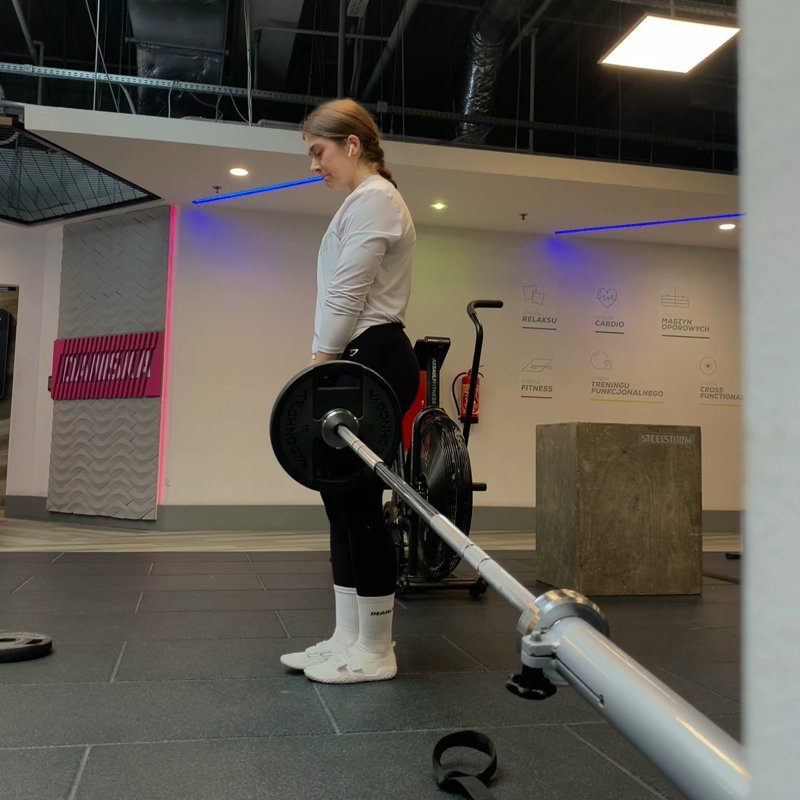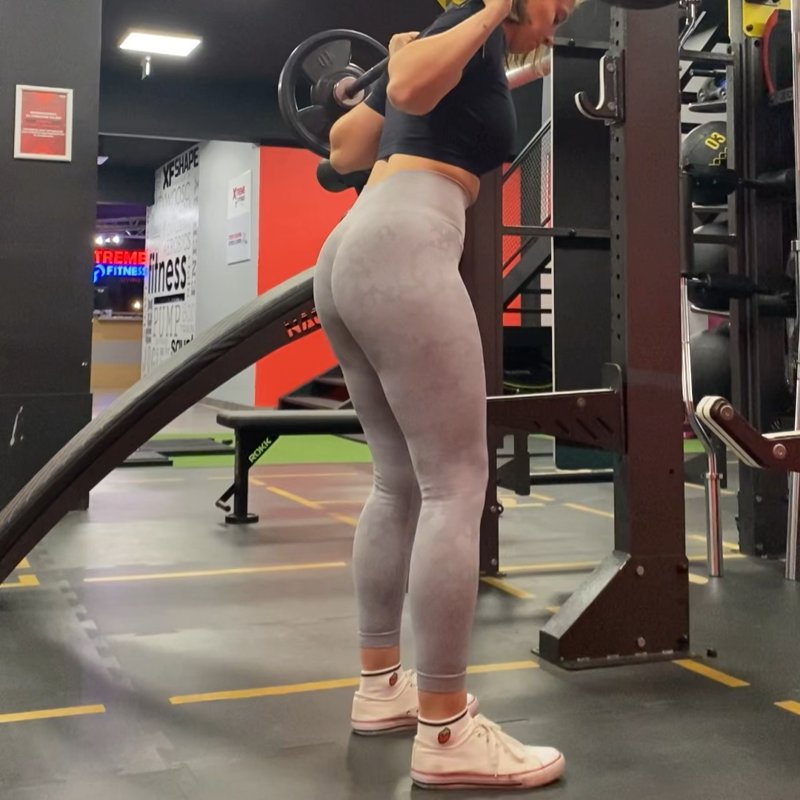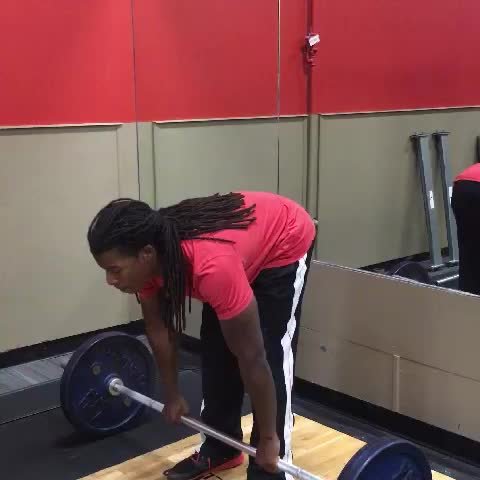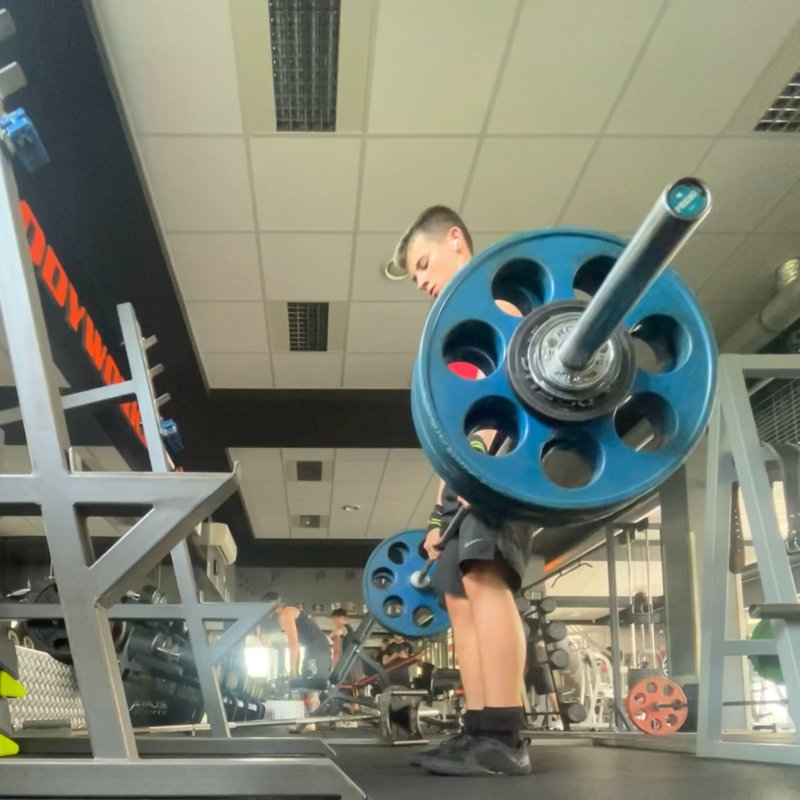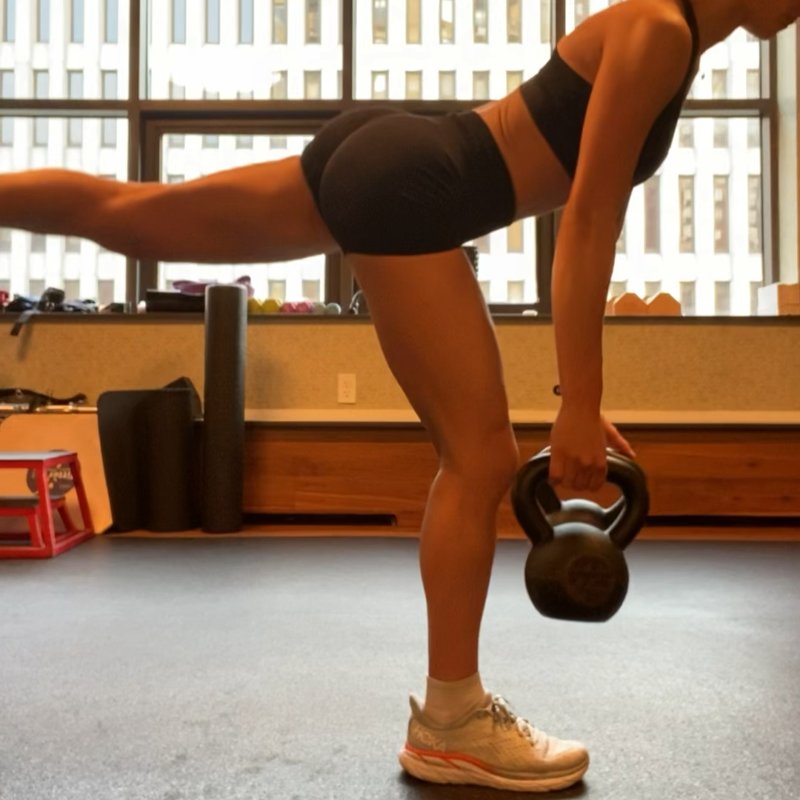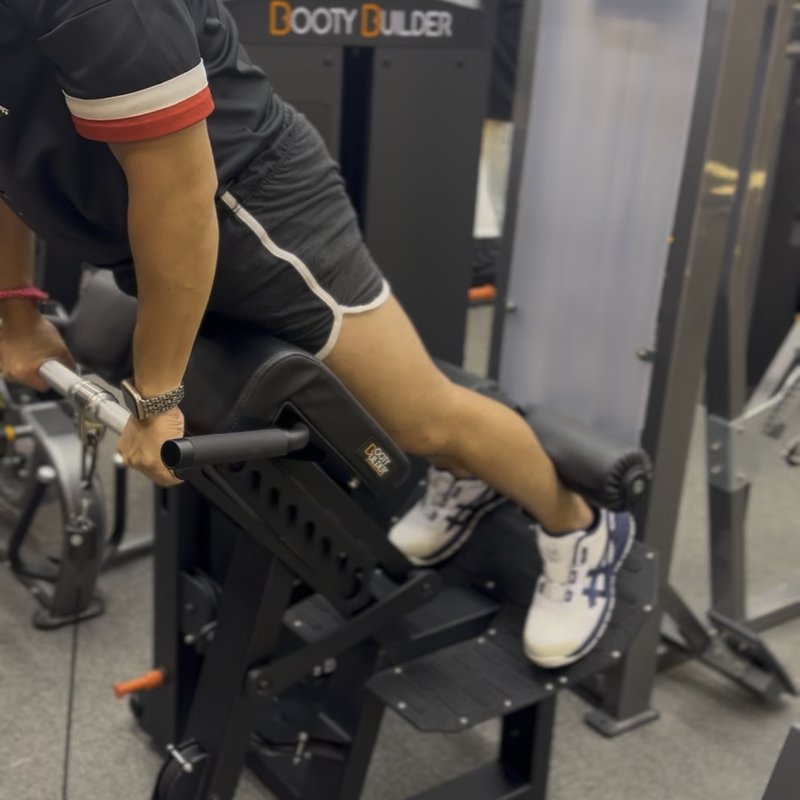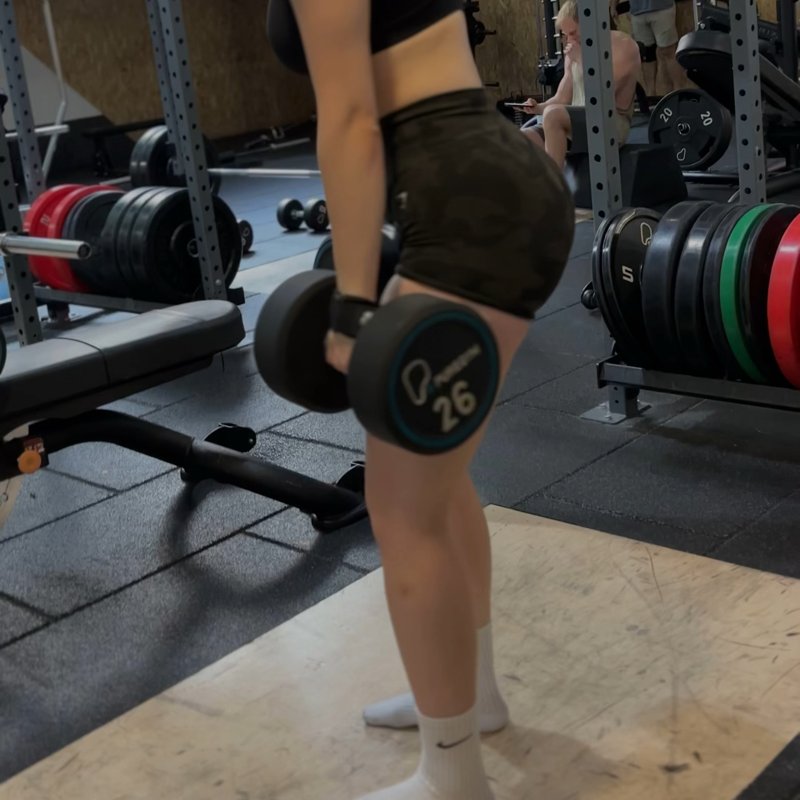Romanian Deadlift: The Ultimate Guide
The Romanian deadlift (RDL) is a fundamental hip-hinge movement that targets the posterior chain muscles. This guide covers proper technique, variations, and programming strategies to strengthen your hamstrings, glutes, and lower back.

Quick Facts
Key Benefit
Builds exceptional posterior chain strength with less lower back stress than conventional deadlifts
Primary Muscles
Erector Spinae, Glutes, Hamstrings
Secondary Muscles
Forearms, Hip Adductors, Lats, Traps
Equipment
Barbell, Dumbbells (optional)
Difficulty
Intermediate
Type
Compound, Strength, Hypertrophy
In This Guide
Ready to master the Romanian Deadlift?
Track your progress, see improvements over time, and build strength consistently.
Download GravitusThe Romanian Deadlift (RDL) is one of the most effective exercises for developing the posterior chain muscles—hamstrings, glutes, and lower back. Unlike the conventional deadlift that starts from the floor, the RDL begins from a standing position and emphasizes the eccentric (lowering) phase of the movement, creating tremendous tension in the hamstrings and glutes. This hip-hinge movement pattern is not only essential for building muscle and strength but is also a fundamental movement skill that carries over to many athletic activities and daily life movements. The RDL teaches proper hip hinging while maintaining a neutral spine—a critical skill for safely lifting objects and protecting your back during various activities. Whether you're an athlete looking to improve performance, a strength enthusiast wanting to build a more balanced physique, or someone focused on functional fitness, the Romanian deadlift deserves a place in your training program. This comprehensive guide covers proper technique, common mistakes to avoid, effective variations, and programming strategies to help you maximize your results with this powerful exercise.
Why the Romanian Deadlift Is Worth Mastering
The Romanian deadlift offers several unique benefits that make it an essential exercise in any well-rounded strength training program:
Posterior Chain Development
Directly targets the entire posterior chain (hamstrings, glutes, erector spinae) which is often underdeveloped in many trainees but crucial for strength, athletic performance, and injury prevention.
Improved Hip Mobility
Teaches proper hip hinging mechanics while developing flexibility in the hamstrings and mobility in the hips—vital components for both performance and daily function.
Reduced Lower Back Stress
Compared to conventional deadlifts, the RDL typically places less compressive force on the spine while still effectively training the posterior chain and developing back strength.
Proper Romanian Deadlift Form: Step-by-Step
Starting Position
- Set up with a barbell (or dumbbells) at hip level, either by taking it from a rack or performing a deadlift to get into position.
- Stand with feet hip-width apart, toes pointing forward or slightly outward.
- Hold the bar with a shoulder-width, double-overhand grip (palms facing down).
- Stand tall with shoulders pulled back and down, chest up, and core engaged.
- The bar should be touching or nearly touching your thighs, with arms straight and elbows locked.
- Establish a neutral spine position (natural curve in lower back) that you'll maintain throughout the movement.
The Movement
- Initiate the movement by pushing your hips backward while maintaining a soft bend in the knees (about 10-15 degrees that remains consistent throughout).
- As you hinge at the hips, keep the bar close to your body, sliding it down your thighs.
- Maintain a neutral spine position—no rounding or excessive arching of the back.
- Continue lowering the bar by hinging at the hips until you feel a significant stretch in your hamstrings, typically with the bar reaching mid-shin level.
- At the bottom position, your torso should be roughly parallel to the floor or slightly above, depending on your mobility.
- Drive through your heels and mid-foot, contract your glutes, and push your hips forward to return to the standing position.
- Fully extend the hips at the top, squeezing your glutes, but avoid hyperextending your lower back.
Key Form Tips
Hip Hinge
Focus on pushing your hips back rather than bending forward; the movement is a hinge, not a squat.
Bar Path
Keep the bar in contact with or very close to your legs throughout the entire movement.
Knee Position
Maintain a slight, consistent bend in the knees; don't allow them to straighten completely or bend further during the movement.
Back Position
Keep a neutral spine throughout; neither rounded nor hyperextended.
Depth
Lower to a point determined by your hamstring flexibility, not an arbitrary position; stop when you feel a significant stretch.
Glute Activation
Finish each rep with a strong glute contraction, driving the hips fully forward.
Muscles Worked in the Romanian Deadlift
Primary Muscles
- Hamstrings: The primary target of the RDL, these posterior thigh muscles work eccentrically during the lowering phase and concentrically during the lifting phase to extend the hips.
- glutes: The largest muscle in the buttocks region works powerfully during the hip extension phase of the movement, especially when returning to the standing position.
- Erector Spinae: These muscles running along the spine work isometrically to maintain a neutral spine position throughout the movement.
Secondary Muscles
- hip adductors: The inner thigh muscles assist in stabilizing the legs and pelvis during the movement.
- traps: The upper back muscles work isometrically to keep the shoulders pulled back and the spine in proper alignment.
- forearms: The muscles of the forearm work to maintain grip on the bar throughout the exercise.
- lats: The lats assist in keeping the bar close to the body and stabilizing the shoulder position.
Common Mistakes and How to Avoid Them
Rounding the lower back
Allowing the lower back to round places extreme stress on the spine and reduces hamstring engagement. Maintain a neutral spine position throughout the movement by bracing your core, keeping your chest up, and focusing on hinging at the hips rather than bending at the waist.
Bending the knees too much
Excessive knee bend turns the movement into a partial squat rather than a hip hinge. Establish a slight (10-15 degree) knee bend at the start of the movement and maintain that same bend throughout the exercise, focusing on hinging at the hips while keeping the shins relatively vertical.
Lowering the weight too far
Forcing depth beyond your current hamstring flexibility can cause your lower back to round. Only lower the weight to the point where you feel a significant stretch in your hamstrings and can maintain a neutral spine. As flexibility improves over time, your range of motion will naturally increase.
Moving the bar away from the body
Allowing the bar to drift forward increases strain on the lower back and reduces hamstring engagement. Keep the bar in contact with or very close to your legs throughout the entire movement, thinking about sliding it down your thighs and shins during the descent.
Romanian Deadlift Variations
Equipment Variations
-
Dumbbell Romanian Deadlift
Using dumbbells instead of a barbell allows for a slightly longer range of motion and can highlight and address strength imbalances between sides.
-
Single-Leg Romanian Deadlift
Performing the movement on one leg at a time significantly increases the balance challenge and core engagement while addressing strength asymmetries.
-
Banded Romanian Deadlift
Adding resistance bands to the barbell creates accommodating resistance that increases tension at the top position, emphasizing glute activation.
Advanced Variations
-
Deficit Romanian Deadlift
Standing on a small platform (1-2 inches) increases the range of motion and stretches the hamstrings to a greater degree.
-

Snatch-Grip Romanian Deadlift
Using a wider grip increases the range of motion and places additional emphasis on the upper back muscles.
-
Good Morning
A related hip-hinge movement where the weight is supported across the upper back, placing less stress on the grip while maintaining similar mechanics.
FAQs About the Romanian Deadlift
The primary differences are the starting position and movement pattern. Conventional deadlifts start with the weight on the floor and involve both a knee and hip extension, essentially moving the weight from floor to hip level. Romanian deadlifts start from a standing position and emphasize hip hinging with minimal knee bend, focusing primarily on the eccentric phase (lowering) and targeting the hamstrings more directly. Additionally, RDLs typically use a higher hip position, more vertical shins, and often employ lighter weights with higher repetitions compared to conventional deadlifts.
Lifting straps can be beneficial for Romanian deadlifts, especially when working with heavier weights or higher repetitions where grip might become a limiting factor. Since the primary goal of RDLs is to train the posterior chain—not grip strength—straps allow you to focus on the target muscles without being limited by your grip. That said, it's generally good practice to perform some sets without straps to develop grip strength. A balanced approach would be to use straps for your heaviest sets or when programming higher repetitions (10+) while going without straps for warm-up sets and moderate-load work.
Video Demonstrations
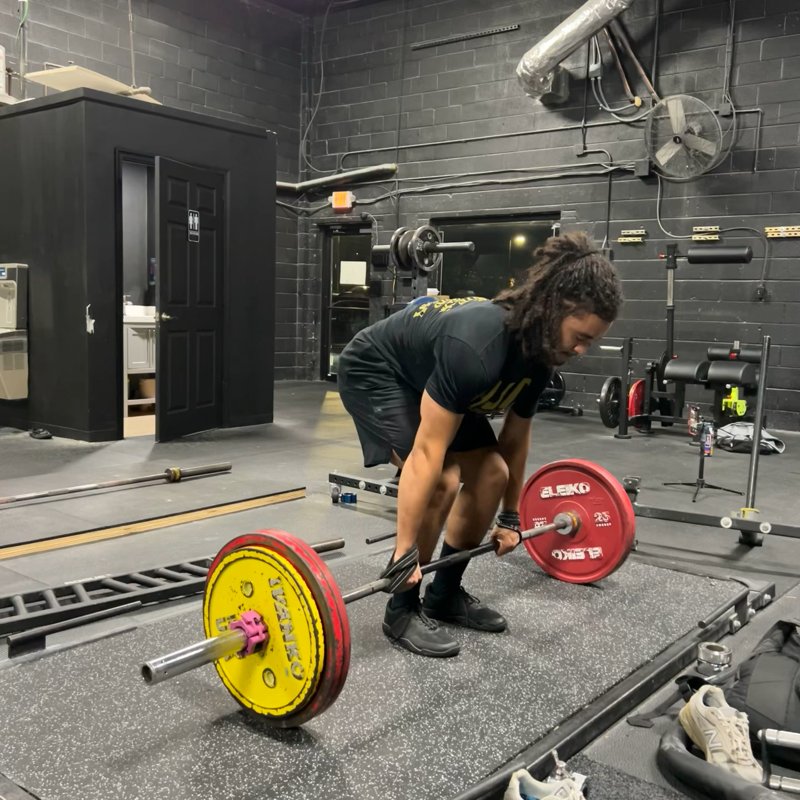
Log in to watch video demonstrations
Login to Watch3 video demonstrations available
Find more video demonstrations in the Gravitus app
Tips from the Community
-

Keep your chest up, back slightly arched and your shoulders retracted.
-

The bar should stay in contact with your legs all the way down.
-

Descend as far as you can without rounding your back.
-

Push your hips back, and don’t let your knees come forward once they’re unlocked
-

Neck should remain “neutral,” and stay straight aligned with back. Neck should not be craned up, looking forward like the video.
Track your progress with Gravitus
Download Gravitus to log your workouts, track your progress, and join a community of fitness enthusiasts.

Helpful Resources
One Rep Max Calculator
Find your one rep max for any exercise without maximal testing. Essential for developing effective strength training programs.
Calculate 1RMWorkout Programs
Follow structured workout programs created by fitness professionals to maximize your strength and muscle gains.
View Programs
